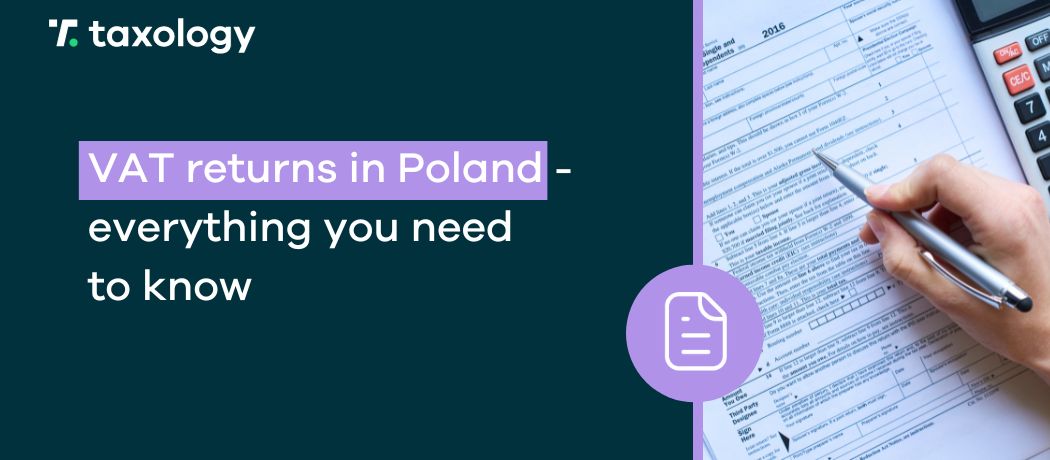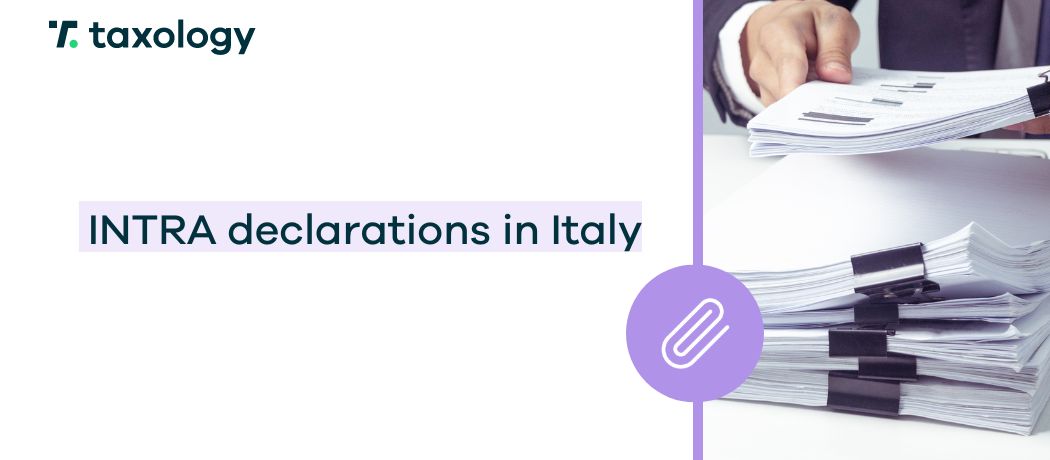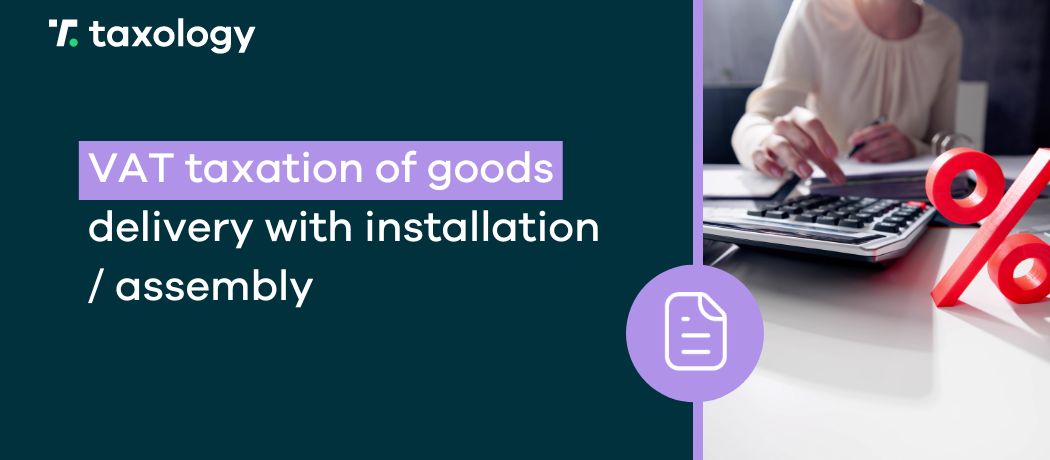Italy ranks as the fourth largest e-commerce market in Europe in terms of value. It is no surprise, then, that it attracts entrepreneurs looking to expand in this direction. However, […]
Read in: 4 minVAT returns in Poland – everything you need to know
- Last update: 09.04.2024
- Published: 19.05.2023
- Read in: 7 min
VAT, commonly referred to as value added tax due to its English name, in Poland it is officially known as the tax on goods and services.
It should be noted that VAT is an indirect tax imposed at different stages of production and distribution. The buyer pays VAT as part of the total price, and the seller is responsible for accounting for it. However, the ultimate payment of VAT occurs when goods and services are purchased by the final consumer.
VAT taxpayers have various obligations, one of which is the completion and submission of VAT returns, on which we will delve into in this article.
In this article you will learn about:
- What is a VAT return?
- What does the record-keeping part and the declarative part of the Uniform Control File (JPK) contain?
- Who is required to submit VAT returns?
- Who is not required to submit VAT returns?
- What is output VAT and input VAT?
- What is the purpose of filing a VAT declaration?
- Where and by when should VAT be declared?
- What are the consequences of not submitting the declaration on time?
What is a VAT return?
A VAT return is an official document that taxpayers submit to the tax office, outlining the amount of value added tax they are liable to pay or entitled to receive as a refund.
Prior to September 30, 2020, Polish business owners were required to submit two separate documents: VAT records in the form of JPK_VAT and the VAT-7 declaration. However, a change was implemented on October 1, 2020, merging these two documents into one, commonly known as the Single Control File (JPK_VAT). This consolidated file now includes both the recording and declaration components.
What do the record-keeping and declaration parts of the JPK_VAT contain?
The record-keeping part, known as JPK_VAT, contains information regarding sales and purchases made during the specified accounting period.
On the other hand, the declaration section is more extensive. It consists of 60 specific items and corresponding instructions.
This part of the declaration includes specific details such as:
- The basis for taxation and the amount of output tax on supplies of goods and services, both within and outside the national territory.
- The taxable amount and the amount of output tax on intra-Community acquisitions of goods.
- The VAT amount on the supply of goods.
- The VAT amount to be carried over from the previous return.
- The net amount and VAT on goods and services included in fixed assets, as well as the net amount and VAT on other purchased goods and services.
- The total amount of input VAT.
- The amount of VAT to be paid to ZUS (Social Insurance Institution).
Who is required to submit VAT returns?
Tax returns must be submitted by all entrepreneurs who are active VAT taxpayers, regardless of the scale and nature of their business.
Who is not required to submit VAT returns?
Individuals who do not participate in business activities, have temporarily suspended their business operations, or conduct activities that are exempt from VAT as specified in Article 43(1) or Article 82(3) of the VAT Act are not obligated to submit VAT returns.
For example, certain activities, such as medical or educational services, are exempt from VAT and entrepreneurs exclusively conducting such activities do not have to submit a VAT return.

Do you need help with VAT issues in foreign sales?
You’ve come to the right place! Our VAT Compliance specialists will make VAT no longer a problem!
Schedule a consultationOutput VAT vs. input VAT
Two significant concepts related to VAT returns are ‘input VAT’ and ‘output VAT’.
The term ‘input VAT’ represents the VAT paid by an entrepreneur when acquiring goods. On the other hand, ‘output VAT’ refers to the VAT included by the same business owner in the total prices of goods and services sold.
To put it simply, ‘output VAT’ is calculated by multiplying the net price by the applicable VAT rate, for example, 23%. Conversely, ‘input VAT’ is the VAT included in the price, which the entrepreneur can deduct by including it in the VAT return.
What is the purpose of filing a VAT declaration?
The primary objective of the VAT return is to calculate the value added tax amount that the taxpayer must pay to the tax office. Within this document, the taxpayer provides details, including the input VAT, which is the tax paid on the acquisition of goods and services used in business operations. This input VAT is then deducted from the VAT due.
Additionally, VAT returns allow tax authorities to monitor commercial transactions, ensuring transparency regarding tax liabilities.
Monthly and quarterly VAT returns
VAT returns can be filed either on a monthly or quarterly basis. It’s important to mention that the quarterly option is not available to all businesses, and the default choice for every business is to file monthly declarations.

Who can submit VAT returns quarterly?
Quarterly VAT returns are designed for what are referred to as “small taxpayers.” This category includes entrepreneurs whose annual turnover does not exceed EUR 1,200,000, equivalent to PLN 5,793,000. These conversion rates are calculated based on the average NBP exchange rate from October 1st of the previous year and rounded up to PLN 1,000.
Furthermore, starting from July 1st, 2023, the implementation of SLIM VAT 3 will increase the aforementioned threshold to €2,000,000, which is equivalent to PLN 9,654,000.
Additionally, the term “small taxpayers” can also encompass individuals engaged in brokerage business, investment fund management, alternative investment fund management, acting as agents, contractors, or providing similar services, with the exception of operating a commission shop.
Nevertheless, it is important to highlight that if the total sum of commission or any other type of compensation for rendered services (including taxes) exceeds the equivalent of €45,000 in the previous fiscal year, business owners will be required to file monthly VAT returns instead.
However, it is crucial to note that apart from the aforementioned condition, several other requirments must be fulfilled in order to be eligible for quarterly accounting:
- the business must be registered as an active VAT taxpayer for a minimum of 12 consecutive months,
- in the current quarter as well as the four preceding quarters, the business cannot engage in the supply of goods and services listed in attachment no. 15 to the VAT Act,
- during the current quarter, it is not permissible to import goods in accordance with the regulations outlined in Article 33a, Paragraph 1,
- it cannot be determined during the ongoing quarter that the taxpayer has failed to fulfil the obligation of ensuring the availability of a payment instrument to facilitate the payment for their services.
Do you have to submit zero declarations when there are no sales yet and the VAT number is already active?
In most countries within the European Union, there is an obligation to file VAT returns even if no taxable transactions have occurred during a given period. These filings are known as zero returns and serve to confirm the absence of sales in the specific accounting period. If you have an active VAT number, there is usually a requirement to submit VAT returns even if no sales were made.
However, it’s important to note that the obligation to file zero returns and the frequency of their submission (e.g., monthly, quarterly) can vary depending on the country and the regulations in force in the respective EU member state. Therefore, it’s advisable to familiarize yourself with the requirements and tax regulations applicable in the country where you conduct your business.
Where and by when should VAT be declared?
The submission of VAT returns, whether on a monthly or quarterly basis, needs to be completed by the 25th of the month following the respective accounting period. This can be done:
- via the portal: e-mikrofirma.mf.gov.pl,
- or by the use of commercial software.
However, it is important to highlight that before sending the JPK_VAT file to the Tax Office, it must be signed. This can be achieved through various methods, including using a qualified electronic signature, a trusted profile on the ePUAP platform, or authorising the data.
Furthermore, it is worth mentioning that upon successfully submitting a properly completed JPK_VAT, an Official Receipt (UPO) will be received.
What are the consequences of not submitting the declaration on time?
Timely submission of VAT returns carries great significance, as any negligence in this regard can give rise to various legal and financial repercussions. Failing to file a VAT return, submitting it after the deadline, or providing inaccurate information can carry to the following consequences:
- Imposition of financial penalties.
- Accrual of statutory interest.
- Initiation of legal proceedings, including criminal charges.
It is important to emphasise that the failure to submit a VAT return within the designated time frame constitutes a fiscal offence. Typically, this offence incurs financial penalties, the amount of which is determined based on the national minimum wage. Presently, the national minimum wage stands at PLN 3,490, and it will rise to PLN 3,600 from July 2023.
The specific details regarding the financial consequences for not submitting VAT returns on time are outlined in Article 48 of the Fiscal Penal Code, sections 1-5. As per these provisions, until the minimum wage increase takes effect, the penalties can range from PLN 349 to PLN 69,800. In the latter half of 2023, the penalty range will be between PLN 360 and PLN 72,000.




